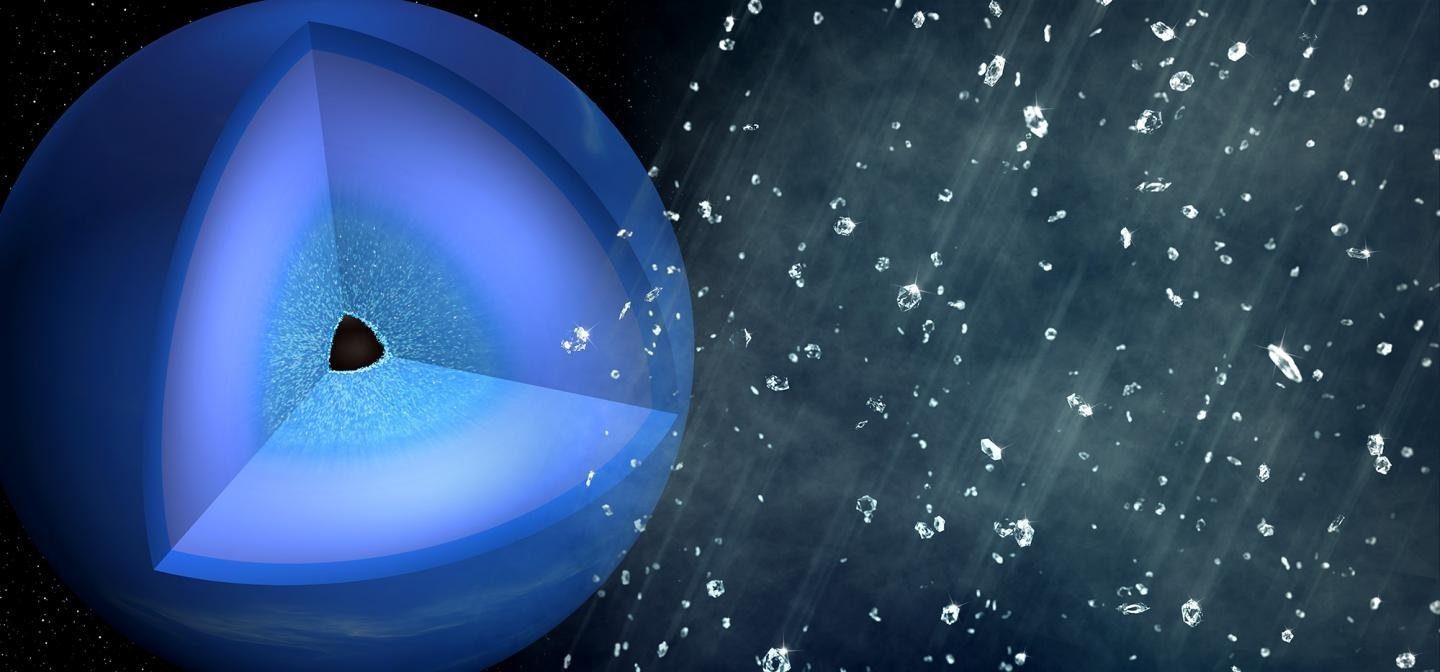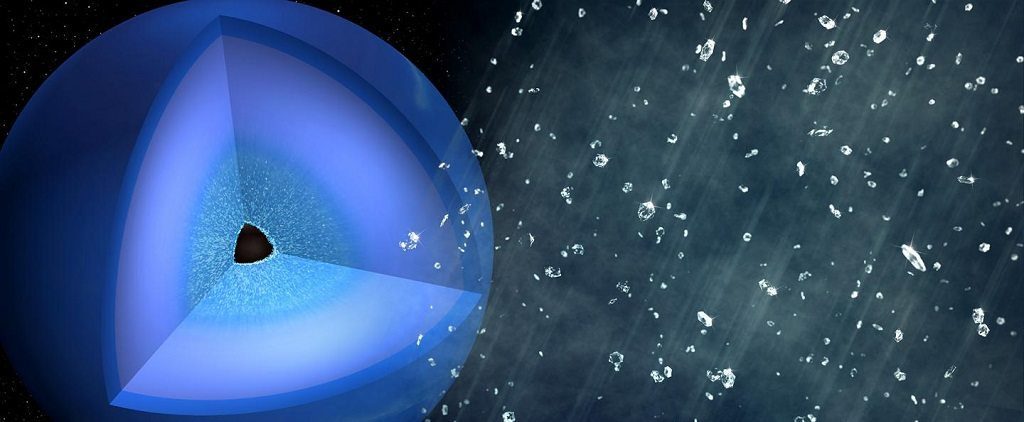[dropcap style=”font-size:100px; color:#992211;”]I[/dropcap]n an infinite multiverse, all things are possible somewhere, so reports of diamond rain on our own solar system’s Neptune shouldn’t surprise.
Neptune’s Diamond Rain though: it’s surely the title of one of those mid-seventies lover’s rock albums you find whilst cratedigging (and wonder whether you should take a punt on a record with men in lurex posing pouches on the cover).
In cooperation with colleagues from Germany and the United States, researchers at the Helmholtz-Zentrum Dresden-Rossendorf (HZDR) have managed to demonstrate ‘diamond showers’ forming in the ice giants of our solar system. Using the ultra-strong X-ray laser and other facilities at the Stanford Linear Accelerator Center (SLAC) in California, they simulated the conditions inside the cosmic giants. For the first time ever, they were able to observe the fission of hydrocarbon and the conversion of carbon into diamonds in real time. They published their results in the journal Nature Astronomy (DOI: 10.1038/s41550-017-0219).
The interior of planets like Neptune or Uranus consists of a solid core swathed in thick layers of “ice”, which is mostly made up of hydrocarbons, water and ammonia. For a long time, astrophysicists have been speculating that the extreme pressure that reigns more than 10,000 kilometers beneath the surface of these planets splits the hydrocarbons causing diamonds to form, which then sink deeper into the planet’s interior. “So far, no one has been able to directly observe these sparkling showers in an experimental setting,” says Dr. Dominik Kraus, who is the head of a Helmholtz Junior Research Group at HZDR. That was precisely the breakthrough Kraus and his international team have now achieved: “In our experiment, we exposed a special kind of plastic – polystyrene, which also consists of a mix of carbon and hydrogen – to conditions similar to those inside Neptune or Uranus.”
Shock waves charging through the sample
They did this by driving two shock waves through the samples, triggered by an extremely powerful optical laser in combination with the X-ray source Linac Coherent Light Source (LCLS) at SLAC. At a pressure of about 150 gigapascal and temperatures of about 5,000 degrees Celsius, they compressed the plastic. “The first smaller, slower wave is overtaken by another stronger second wave,” Dominik Kraus explains. “Most diamonds form the moment both waves overlap.” And since this process takes only a fraction of a second, the researchers used ultrafast X-ray diffraction to take snapshots of the diamonds’ creation and the chemical processes involved. “Our experiments show that nearly all the carbon atoms compact into nanometer-sized diamonds,” the Dresden researcher summarizes.
Based on these results, the authors of the study assume that the diamonds on Neptune and Uranus are much larger structures and likely sink down to the planet core over a period of thousands of years. “Our experiments are also providing us with better insights into the structure of exoplanets,” Kraus anticipates. Researchers can measure two main metrics in these cosmic giants outside of our solar system: The first one is mass, based on positional changes of the mother star; and the other is its radius, derived from the shadow that is cast as the planet passes a star. The relation between these two metrics offers clues about the planet’s chemical make-up, for instance, whether it consists of light or heavy elements.
“And, for their part, these chemical processes inside the planet tell us something about its vital properties,” Dominik Kraus continues. “This allows us to improve planetary models. As our studies show, previous simulations have not been accurate.” In addition to astrophysical insights, these experiments also hold potential for practical application. The nano-diamonds created in the experiments can be used in electronic instruments, medical procedures, or as cutting materials in industrial production. Current production of such diamonds is mainly done by blasting. Laser-based production could mean a cleaner and more controllable process.
Source: Eurekalert/Helmholtz-Zentrum Dresden-Rossendorf
Image: Greg Stewart / SLAC National Accelerator Laboratory

Some of the news that we find inspiring, diverting, wrong or so very right.




















